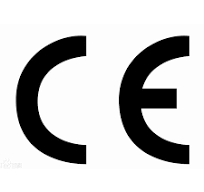Microdermabrasion vs. Traditional Facials: Which is Better for Your Skin?
2025-07-05
Microdermabrasion vs. Traditional Facials: Which is Better for Your Skin?
Table of Contents
- 1. Introduction to Skin Treatments
- 2. Understanding Microdermabrasion
- 2.1 What is Microdermabrasion?
- 2.2 Benefits of Microdermabrasion
- 2.3 Who Should Get Microdermabrasion?
- 3. Exploring Traditional Facials
- 3.1 What is a Traditional Facial?
- 3.2 Benefits of Traditional Facials
- 3.3 Who Should Get Traditional Facials?
- 4. Comparing the Two Treatments
- 5. Cost Considerations
- 6. How Often to Get Treatment
- 7. Final Thoughts: Which is Right for You?
- 8. FAQs
1. Introduction to Skin Treatments
In the ever-evolving world of skincare, choosing the right treatment can be overwhelming. Among the numerous options available, **microdermabrasion** and **traditional facials** stand out for their popularity and varying benefits. While both aim to enhance skin health and appearance, they do so through different methodologies and outcomes. This article provides a thorough comparison to help you determine which treatment aligns best with your skin care goals.
2. Understanding Microdermabrasion
2.1 What is Microdermabrasion?
Microdermabrasion is a non-invasive, cosmetic procedure that exfoliates the skin using a specialized device. It involves the application of fine crystals or a diamond-tipped wand to remove the outer layer of dead skin cells, revealing a brighter, smoother complexion underneath. This treatment is often performed in a clinical setting by a licensed esthetician or dermatologist.
2.2 Benefits of Microdermabrasion
The advantages of microdermabrasion are numerous:
- **Immediate Results**: Many clients notice an immediate improvement in skin texture and tone after the first session.
- **Reduced Appearance of Scars**: This treatment can effectively reduce the visibility of acne scars, sun damage, and fine lines.
- **Enhanced Product Absorption**: By eliminating dead skin, microdermabrasion allows skincare products to penetrate deeper and work more effectively.
- **Minimal Downtime**: Recovery time is brief, with most individuals returning to their daily activities right after treatment.
2.3 Who Should Get Microdermabrasion?
Microdermabrasion is ideal for individuals looking to improve the overall appearance of their skin, particularly those with:
- Dull skin lacking radiance
- Mild to moderate acne scarring
- Uneven skin tone
- Large pores
However, those with active acne, rosacea, or very sensitive skin should consult a professional before undergoing this treatment.
3. Exploring Traditional Facials
3.1 What is a Traditional Facial?
A traditional facial is a holistic treatment that typically includes several steps designed to cleanse, exfoliate, hydrate, and nourish the skin. This treatment can vary significantly based on the esthetician’s techniques and the type of products used, but it often involves cleansing, steaming, exfoliation, extraction of impurities, and applying a mask tailored to the client's skin type.
3.2 Benefits of Traditional Facials
Traditional facials offer a myriad of benefits:
- **Deep Cleansing**: Facials provide thorough cleansing of the skin, unclogging pores and removing impurities.
- **Relaxation and Stress Relief**: The gentle massage and soothing products used during a facial promote relaxation and stress relief.
- **Customized Treatments**: Facials can be tailored to meet specific skin concerns, such as hydration, anti-aging, or acne treatment.
- **Improved Circulation**: The massage techniques used can enhance blood circulation, promoting healthier skin.
3.3 Who Should Get Traditional Facials?
Traditional facials are suitable for a broad range of skin types, making them an excellent option for individuals:
- Seeking relaxation and pampering
- With dry or dehydrated skin needing hydration
- Looking to improve their skincare routine with personalized treatments
Those with severe skin issues like eczema or active infections should consult a professional before proceeding.
4. Comparing the Two Treatments
As skincare enthusiasts weigh their options, it’s essential to consider how microdermabrasion and traditional facials stack up against each other.
4.1 Effectiveness of Microdermabrasion vs. Traditional Facials
When evaluating efficacy, microdermabrasion tends to excel in:
- **Exfoliation**: It provides a deeper exfoliation than a typical facial, making it ideal for those with rough or uneven skin.
- **Targeting Specific Concerns**: Microdermabrasion is particularly effective for addressing specific issues like acne scars and fine lines.
Conversely, traditional facials shine in:
- **Overall Skin Health**: They provide a more holistic approach, focusing on relaxation and long-term skin health.
- **Customization**: Facials can be more easily tailored to address individual skin concerns, allowing for greater flexibility.
4.2 Safety and Side Effects
Both treatments are generally safe; however, they come with different considerations. Microdermabrasion may cause mild redness or irritation post-treatment, while traditional facials may result in temporary sensitivity, especially with extractions. Consulting a licensed professional for personalized advice is crucial to mitigate risks.
5. Cost Considerations
When choosing between microdermabrasion and traditional facials, cost can be a deciding factor. Typically, **microdermabrasion** sessions range from **$75 to $200**, depending on the practitioner and location. In contrast, a **traditional facial** can vary widely, generally costing between **$50 and $150**. It’s essential to consider not just the price but the overall value and results you seek from each treatment.
6. How Often to Get Treatment
For optimal results, microdermabrasion treatments are recommended every **4 to 6 weeks**, allowing the skin time to recover and regenerate. Traditional facials can be scheduled more frequently, typically every **3 to 4 weeks**, depending on individual skin needs and goals.
7. Final Thoughts: Which is Right for You?
Choosing between microdermabrasion and traditional facials depends on your individual skin type, concerns, and desired outcomes. If you are seeking deep exfoliation and targeted treatment for specific skin issues, microdermabrasion may serve you best. Conversely, if you prefer a relaxing experience that addresses overall skin health and hydration, a traditional facial might be the ideal choice. Consulting with a skincare professional can help you make the most informed decision.
8. FAQs
What is the main difference between microdermabrasion and a traditional facial?
The primary difference lies in the technique; microdermabrasion exfoliates the skin with a mechanical device, while traditional facials involve manual cleansing and various skincare products.
How long do results from microdermabrasion last?
Results can last approximately 2 to 4 weeks, depending on individual skin conditions and aftercare.
Can I combine microdermabrasion and traditional facials?
Yes, many skincare professionals recommend alternating between the two treatments for enhanced benefits.
Is microdermabrasion painful?
Most clients report minimal discomfort, often likening the sensation to a light sandpaper feeling on the skin.
How do I prepare for a facial or microdermabrasion treatment?
Avoid sun exposure, exfoliating products, and harsh skincare treatments for at least a week before your appointment to ensure the best results.
Conclusion
In summary, both microdermabrasion and traditional facials offer unique benefits that cater to various skin needs. By understanding the differences, advantages, and considerations of each treatment, we can make informed decisions to enhance our skincare routines. Your choice ultimately depends on your skin type, concerns, and personal preferences, but with the right approach, you can achieve the radiant, healthy skin you desire.









